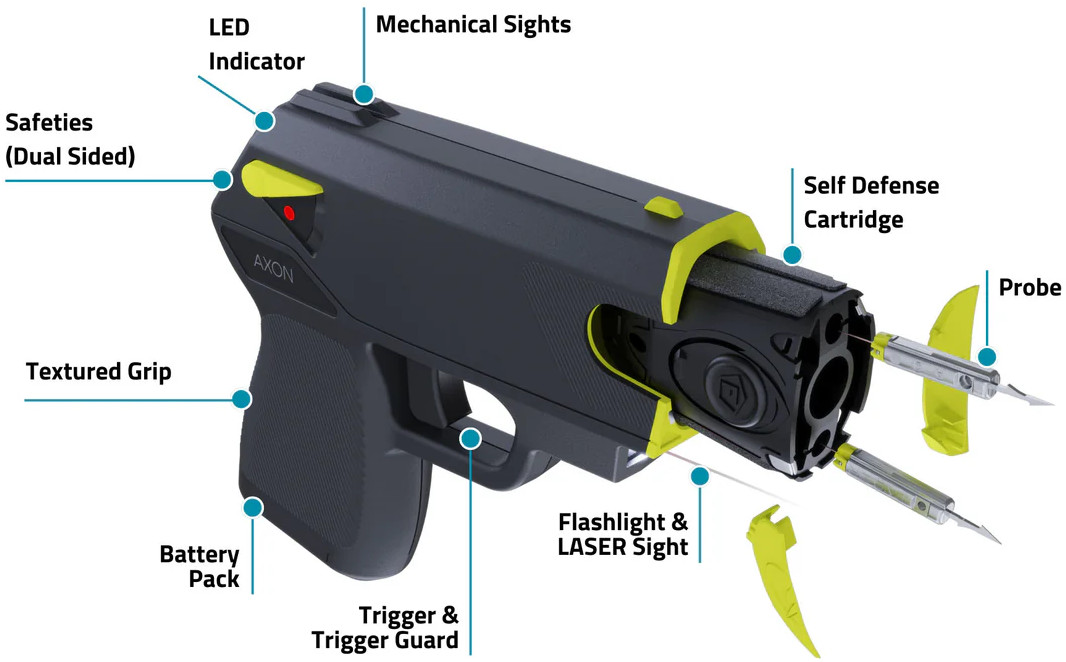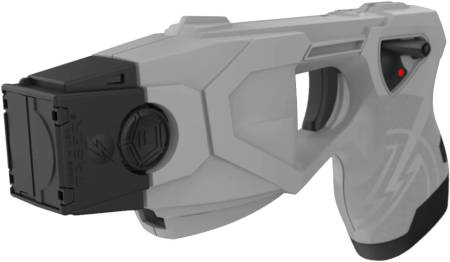How Many Volts is a Taser Gun?

A TASER gun typically delivers an electrical charge of 50,000 volts upon initial activation. However, the amount that actually reaches the target is significantly lower—around 1,200 volts once the probes make contact. While voltage is often the most discussed specification, amperage plays a more critical role in determining its effectiveness.
How TASERs Work: Voltage vs. Amperage
TASERs use high-voltage but low-amperage electrical pulses to temporarily incapacitate an individual. The key factor in neuromuscular incapacitation (NMI) is the current (amperage), not just voltage:
-
Voltage: Enables the electrical charge to penetrate clothing and skin.
-
Amperage (0.0021-0.005 amps): Affects muscles and nerves, causing involuntary contractions.
Unlike common misconceptions, high voltage alone does not determine stopping power. Low amperage ensures that TASERs are non-lethal while still effective in immobilization.
TASER X1 Professional Series
How TASER Compares to Stun Guns
Many people confuse TASER guns with stun guns, but they function differently:
-
TASERs: Fire projectile probes that deliver electrical pulses through thin wires, affecting the nervous system.
-
Stun Guns: Require direct contact and only affect localized areas by delivering a painful shock.
Most stun guns claim millions of volts, but this is marketing exaggeration—amperage, not voltage, determines effectiveness.
Variations in TASER Models
Different TASER models have varying voltage and current levels:
-
TASER X26 & X2: Delivers about 50,000 volts initially, with 1,200 volts sustained.
-
TASER 7: Features adaptive pulse technology to increase effectiveness with changing resistance.
-
TASER Pulse & Pulse+: Designed for civilian use, these models provide similar output but lower sustained current to ensure safety.
Why Voltage Isn't Everything
While voltage numbers may seem high, a TASER's real effectiveness comes from:
-
Electrode placement and spread: Wider probe spread increases incapacitation.
-
Pulse frequency and duration: Determines how long the target is affected.
-
Low amperage design: Prevents fatal injuries while still disabling an attacker.

TASER 7 CQ (Close Quarters)
Legal Considerations for TASER Voltage
Laws regarding TASERs vary by state and country. Some jurisdictions regulate limits or restrict civilian ownership. Always check local laws before purchasing or carrying a TASER.
Final Thoughts
Understanding TASER voltage vs. amperage helps clear up myths about effectiveness. High voltage alone doesn't make a TASER more powerful—it's the combination of current, waveform, and duration that ensures incapacitation. If you're considering a TASER for self-defense, focus on trusted models designed for personal protection.
Check out our TASER collection to find the right self-defense tool for you!
Add your comment now!
Post CommentRecent posts
-
03/12/2025Best Stun Guns for Self-Defense in 2025
-
03/11/2025How to Prevent Kidnapping – Top Safety Tips
-
03/11/2025What Do Rapists Look For? 10 Red Flags to Avoid

